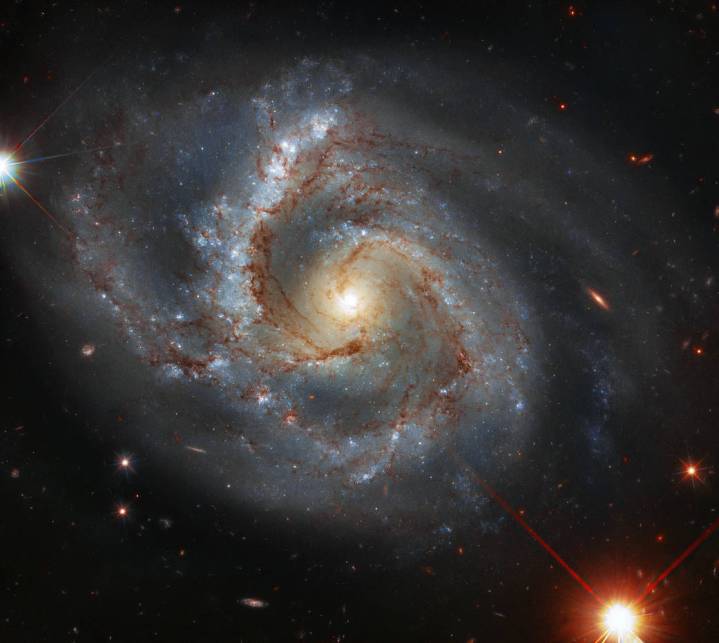
The scientists using the Hubble Space Telescope have shared another beautiful space image, this time of a strangely asymmetrical galaxy located in the constellation of Pegasus.
Most galaxies, including our own Milky Way, are broadly symmetrical unless they have undergone a dramatic event such as a merger with another galaxy which has pulled them into an unusual shape. But occasionally you find an unusually asymmetrical galaxy, like the one pictured in this Picture of the Week from the Hubble Space Telescope.
Galaxy NGC 7678, located 164 million light-years away, is an asymmetrical oddity in which one of its spiral arms is notably brighter than the others. The arms of a spiral galaxy are regions where new stars are often born, as dust and gas clump together and eventually forms together under the force of gravity. These newly born stars burn very brightly, leaving pinpricks of blue light throughout the arms where they are located.
In this galaxy, one of the arms has much more matter in it than the others, meaning it is much more massive and more stars are forming there, which is why it appears brighter. This distinctive feature sets it apart from other galaxies, such as our own. At around 115,000 light-years across, this galaxy is roughly the same size as our Milky Way, and it is also of the barred spiral type.
This galaxy is listed in an astronomical catalog created by Halton Arp in 1966 with the delightful name, “The Atlas of Peculiar Galaxies.” It is listed alongside six other galaxies which also have unevenness between their arms, categorized as “spiral galaxies with one heavy arm.”



